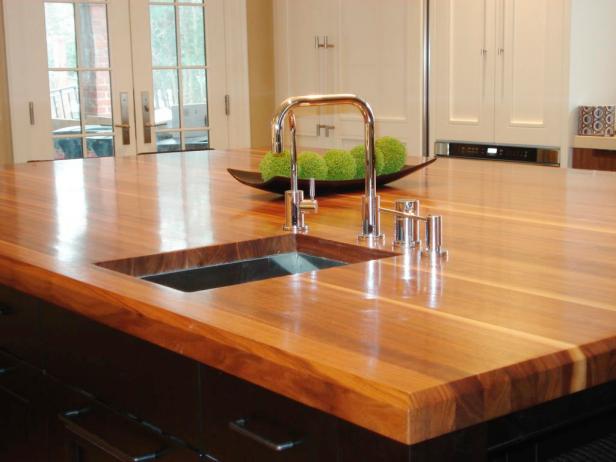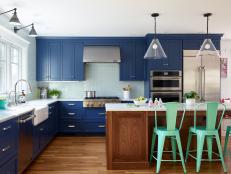Butcher Block and Wood Countertops
Wood counters give a kitchen warmth and natural beauty.

The Grothouse Lumber Company
A warm alternative to cool stone, character-rich wood countertops are staging a comeback. Traditional wood surfaces often are reserved for lower-traffic applications, such as islands that double as eating areas.
True butcher block, made from strips of wood bonded together, serves as a work surface. It is the only countertop material appropriate for slicing and chopping. Most wood countertops are made from maple, though oak, cherry, walnut and teak are also used. Eco-friendly bamboo is gaining popularity.
What Is It? Butcher block countertops consist of strips of wood glued together to form a slab.

Hendricks Churchill
Considerations When Choosing Wooden Countertops
Thickness and Edges. Wood countertop thickness generally ranges from a three-quarter inch to six inches, and butcher block from two inches to 12 inches. A wide variety of edge options exist.
Grain Types. Choose from three grain options depending on the desired function.
- Face Grain. Also called "plank grain," this orientation contains wood planks adhered together with the wide surface positioned upright. This surface, which showcases the beauty of the wood grain, is considered more decorative.
- Edge Grain. The edges of the boards are assembled in an upright position to form a light work surface. It appears less busy than the squares of butcher block.
- End Grain. The ends of the boards are positioned upward, forming a distinctive checkerboard appearance, for a heavy-duty work surface that withstands chopping. This is considered true butcher block. It is usually reserved for small prep areas.

Sabine Klingler Kane, KK Design Koncepts
A butcher block made from reclaimed wood.
Eco-Friendly Options. If you love wood countertops, why not consider a greener option? Reclaimed wood—from old homes and barns—is a popular option, as is domestic wood from managed forests. Another popular alternative is bamboo, which is technically a renewable grass. The surface is extremely hard and sturdy, making it ideal for countertops.
Maintenance. Wipe the countertop with a soft cloth and warm water daily. Mild household cleansers are suitable. Wipe up spills immediately. Generally requires regular applications of mineral oil or beeswax or sealing with food-safe varnish.
The Bottom Line. Wood countertops cozy up a traditional or country kitchen. They're often reserved for a smaller work surface, such as an island, and aren't the best choice above a dishwasher or near a sink.





































